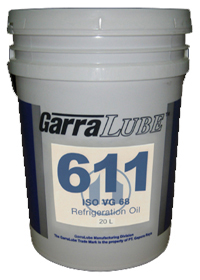SECTION 2: COMPOSITION / INFORMATION ON INGREDIENTS
| COMPONENT | CAS NUMBER | TLV/PEL (mg/M3) | WEIGHT % |
| Highly Refined Paraffinic Oil | 6471-88-4 | 5 (As Oil Mist) | > 95 |
| Proprietary Additives | Mixture | NE | < 5 |
The specific chemical names and composition of the components not disclosed is confidential business information and is withheld as permitted by 29CFR 1910.1200 and various state Right-to-Know laws.
SECTION 3: HAZARD IDENTIFICATION
This material is not considered to be hazardous according to regulatory guidelines. (See Section 15)
POTENTIAL HEALTH EFFECTS
Excessive exposure may result in eye, skin or respiratory irritation. Low order of toxicity. High-pressure injection under skin may cause serious damage.
NFPA Rating: Flammability: 1, Reactivity: 0, Health: 0
HMIS Rating: Flammability: 1, Reactivity: 0, Health: 0
NOTE: This material should not be used for any other purpose than the intended use listed in Section 1 without expert advice. Health studies have shown that chemical exposure may cause potential human health risks, which may vary from person to person.
SECTION 4: FIRST AID MEASURES
EYE CONTACT: Immediately flush with large quantities of cool water for at least 15 minutes. Get medical attention.
SKIN CONTACT: Wash off with soap and water.
INHALATION: Remove to fresh air. If not breathing, give artificial respiration. Get medical attention.
INGESTION: Do NOT induce vomiting. Get medical attention.
SECTION 5: FIRE AND EXPLOSION DATA
EXTINGUISHING MEDIA
Appropriate Extinguishing Media: Water Spray (fog), dry chemical, foam, halon, or carbon dioxide.
Inappropriate Extinguishing Media: Water stream may splash burning liquid and spread fire.
FIRE FIGHTING
Fire Fighting Procedures: Evacuate area. Prevent runoff from fire control or dilution from entering streams, sewers or drinking water supply. Fire fighters should use self-contained breathing apparatus (SCBA) to fight fires. Use water spray to cool fire exposed surfaces and to protect personnel.
Hazardous Combustion Products: Aldehydes, Incomplete combustion products, Smoke, Fume, Sulfur oxides, oxides of carbon.
FLAMMABILITY PROPERITES
Flashpoint (Cleveland Open Cup): > 385F
Flammable Limits (Approximate volume% in Air): LEL: NA UEL: NA
Auto-ignition Temperature: NE
SECTION 6: ACCIDENTAL RELEASE MEASURES
NOTIFICATION PROCEDURE
Contain any spills with absorbents to prevent migrations and entry into sewers or streams. Take up small spills with dry chemical absorbent. Large spills may be taken up with pump or vacuum and finished off with dry chemical absorbent. May require excavation of contaminated soil.
SPILL MANAGEMENT
Land Spill: Contain any spills with absorbents to prevent migrations and entry into sewers or streams. Take up small spills with dry chemical absorbent. Large spills may be taken up with pump or vacuum and finished off with dry chemical absorbent. May require excavation of contaminated soil.
Water Spill: Confine the spill immediately with booms. Stop leak, if you can do so without risking personal safety. Report spills as required to appropriate authorities. Remove from the surface by skimming or with suitable absorbents.
ENVIRONMENTAL PRECAUTIONS
Large spills should be diked for later recovery or disposal. Spills may be taken up with pump or vacuum and finished off with dry chemical absorbent. May require excavation of contaminated soil. To the best of PT GAPURA RAYA knowledge, this product is not regulated by CERCLA/RCRA as a hazardous waste or material. However, this product has not been tested for the toxicity characteristic via the Toxicity Characteristic Leaching Procedure. Therefore, it may be disposed of as an industrial waste in a manner acceptable to good waste management practice and in compliance with applicable local, state, and federal regulations.
HAZARDOUS DECOMPOSITION PRODUCTS: CO, CO2
SECTION 7: HANDLING AND STORAGE
HANDLING
Avoid contact with skin. Prevent spills and leaks to avoid slipping hazards.
STORAGE
Keep containers sealed until ready for use. Avoid excessive long-term storage temperatures to prolong shelf life. Maximum storage temperature: 120F. Store in well ventilated areas.
SECTION 8: EXPOSURE CONTROLS / PERSONAL PROTECTION INFORMATION
Exposure limits/standards for materials that can be formed when handling this product: When mists/aerosols can occur, the following are recommended: 5 mg/m3 - ACGIH TLV, 10mg/m3 - ACGIH STEL, 5 mg/m3 - OSHA PEL
ENGINEERING CONTROLS
The level pf protection and types of control necessary will vary depending upon potential exposure conditions. Under normal conditions, no special control required when used in a well-ventilated area with local exhaust ventilation.
PERSONAL PROTECTION
Personal protective equipment selections vary based on potential exposure conditions such as applications, handling practices, concentration and ventilation. Information on the selection of protective equipment for use with this material, as provided below, is based upon intended, normal usage.
Respiratory Protection: None required in normal use. Use only NIOSH/MSHA Organic vapor approved equipment if necessary.
Hand Protection: Chemical resistant gloves are recommended. No protection is required in normal use.
Eye Protection: Goggles or safety glasses with side shields are recommended.
Skin and Body Protection: Chemical / oil resistant clothing if contact with material is likely. NO skin protection is ordinarily required under normal conditions of use.
Special Hygiene Measures: Practice good personal hygiene. Wash hands after use and handling.
ENVIRONMENTAL CONTROLS
See Section 6, 7, 12, 13.
SECTION 9: PHYSICAL AND CHEMICAL PROPERTIES
Typical physical and chemical properties are given below. Consult the Supplier in Section 1 for additional data.
GENERAL INFORMATION
Physical State: Liquid
Odor: N/A
Odor Threshold: None
IMPORTANT HEALTH, SAFETY, AND ENVIRONMENTAL INFORMATION
Relative Density (at 15 C): 0.90
Flashpoint (Cleveland Open Cup): > 385F
Flammable Limits (Approximate volume% in Air): LEL: NA UEL: NA
Autoignition Temperature: NE
Boiling Point / Range: NE
Vapor Density (Air = 1): < 1 mm
Vapor Pressure, mmHg at 25C: < 1 mm
Evaporation Rate (n-butyl acetate = 1): Negligible
pH: NE
Log Pow (n-Octanol/Water Partition Coefficient): ND
Other Information
Freezing Point: NE
Melting Point: NE
Pour Point: < -30C (< -22F)
DMSO Extract (mineral oil only), IP-346: < 3% wt
SECTION 10: STABILITY AND REACTIVITY
STABILITY: Stable under normal temperatures and pressures
CONDITIONS TO AVOID: Excessive heat. Sources of ignition.
MATERIALS TO AVOID: Strong oxidizing agents, heat, open flame.
Hazardous Decomposition Products: Does not decompose at ambient temperatures.
Hazardous Polymerization: Does not occur.
SECTION 11: TOXICOLOGICAL INFORMATION
ACUTE TOXICITY
Inhalation:
Toxicity (Rat): LC 50 > 5000 mg/m3. Minimally Toxic. Based on review of the components.
Ingestion:
Toxicity (Rat): LD50 > 2000 mg/kg. Minimally Toxic. Based on review of the components.
Skin:
Toxicity (Rabbit): LD50 > 2000 mg/kg. Minimally Toxic. Based on review of the components.
Eye:
May cause mild, short-lasting discomfort to eyes. Based on review of the components.
CHRONIC/OTHER EFFECTS
Severely refined base oil: Not carcinogenic in animal studies. Dermal and inhalation studies showed minimal effects; lung non-specific infiltration of immune cells, oil deposition and minimal granuloma formation. Not sensitizing in test animals.
The following ingredients are cited on the lists below: None
NTP CARC, NTP SUS, IARC 1, IARC 2A, IARC 2B, OSHA CARC
This material is not known to contain any chemical listed as a carcinogen or suspected carcinogen by OSHA Hazard Communication Standard 29CFR 1910.1200, IARC, or the National Toxicology Program (NTP) at a concentration greater than 0.1%.
SECTION 12: ECOLOGICAL INFORMATION
ECOTOXICITY
Material - Not expected to be harmful to aquatic organisms.
MOBILITY
Base oil component - Low solubility and float and is expected to migrate from water to the land. Expected to partition to sediment and wastewater solids.
PERSISTENCE AND DEGRADABILITY
Biodegradation: Base oil component - Expected to be inherently biodegradable.
SECTION 13: DISPOSAL INFORMATION
Disposal recommendations based on material as supplied. Therefore, it may be disposed of as an industrial waste in a manner acceptable to good waste management practice and in compliance with applicable local, state, and federal regulations.
DISPOSAL RECOMMENDATIONS
Product is suitable for burning in an enclosed controlled burner for fuel value or disposal by supervised incineration at very high temperatures to prevent formation of undesirable combustion products.
REGULATORY DISPOSAL INFORMATION
To the best of PT GAPURA RAYA knowledge, this product is not regulated by CERCLA/RCRA as a hazardous waste or material. However, this product has not been tested for the toxicity characteristic via the Toxicity Characteristic Leaching Procedure.
Empty Container Warning: Do not attempt to refill or clean containers since residue is difficult to remove. Empty drums should be completely drained, properly bunged and returned to a drum re-conditioner. All containers should be disposed of in an environmentally safe manner and in accordance with governmental regulations.
SECTION 14: TRANSPORT INFORMATION
LAND-DOT: Not Regulated for Land Transportation
LAND-TDG: Not Regulated for Land Transportation
SEA-IMDG: Not Regulated for Sea Transport
AIR-IATA: Not Regulated for Air Transport
SECTION 15: REGULATORY INFORMATION
OSHA Hazard Communication Standard: When used for its intended purposes, this material is not classified as hazardous in accordance with OSHA 29 CFR 1910.1200.
WHMIS: Not a controlled product
Chemical Inventory Listing: TSCA, CEPA
EPCRA: This material contains no extremely hazardous substances.
SARA (311/312) Reportable Hazard Categories: None
SARA (313) Toxic Release Inventory: This material contains no chemicals subject to the supplier notification requirements of the SARA 313 Toxic Release Program
TSCA: This material is in compliance with the Toxic Substances Control Act (15USC2601-2629)
SECTION 16: OTHER INFORMATION
NE = Not Established, ND = Not Determined, NA = Not Applicable
THIS SAFETY DATA SHEET CONTAINS THE FOLLOWING REVISIONS:
No Revision information is available.
Revision Date: August 2rd, 2010
Supercedes: Any previous versions
Prepared by: Robert Darmago
PT GAPURA RAYA. believes that the information and recommendations contained herein (including data and statements) are accurate as of the date hereof.
No warranty of fitness, warranty of merchantability or any other warranty, expressed or implied, is made concerning the information provided herein.
The information provided herein relates only to the specific product designated and may not be valid where such product is used in combination with any other materials or process.
Further, since the conditions and methods of use of this product and of the information referred to herein are beyond the control of PT GAPURA RAYA.
PT GAPURA RAYA. expressly disclaims any and all liability as to any results obtained or arising from any use of the product or reliance on such information.
|







